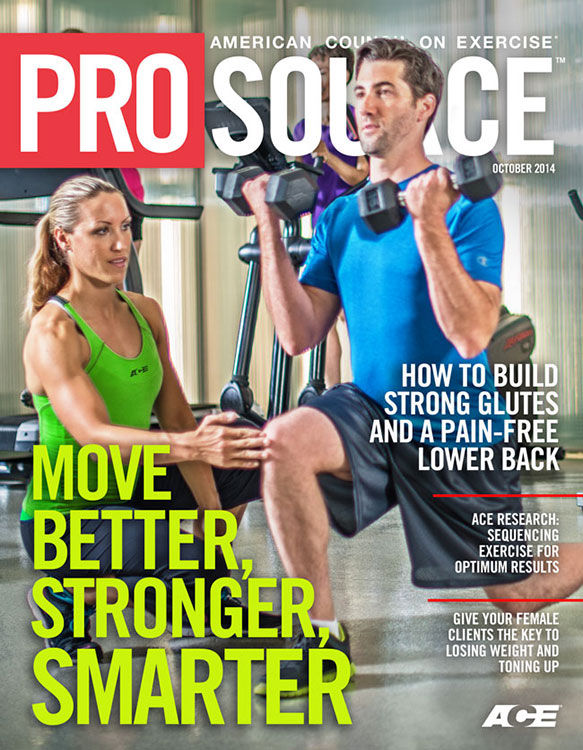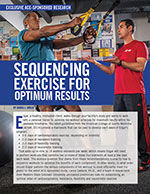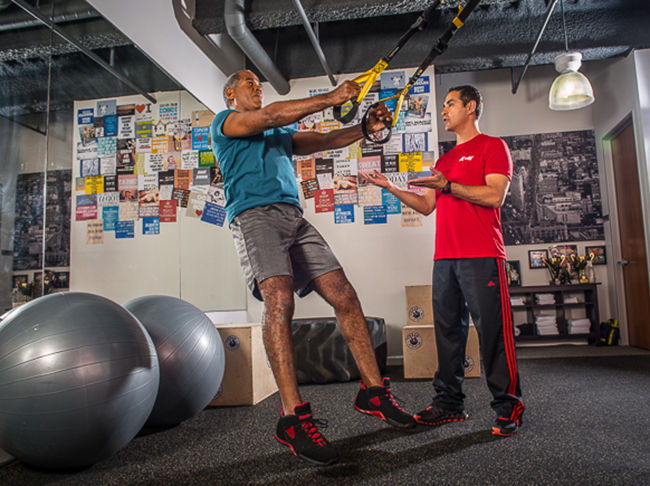
Edgar, a healthy, motivated client, walks through your facility’s doors and wants to work with a personal trainer to optimize his workout schedule for maximum results within his available timeframe. The latest guidelines from the American College of Sports Medicine (ACSM, 2014) provide a framework that can be used to develop each week of Edgar’s program:
- 3–5 days of cardiorespiratory exercise, depending on intensity
- 2–3 days of resistance training
- 2–3 days of flexibility training
- 2–3 days of neuromotor training
That adds up to nine to 14 workout elements per week, which means Edgar will need to perform workouts that combine two or more of these four elements at least a few days each week. The obvious question that stems from these recommendations is exactly how to sequence workouts to optimize the benefits of each component. In other words, in what order should Edgar perform the various components of his workout to most efficiently meet his goals? In the latest ACE-sponsored study, Lance Dalleck, Ph.D., and a team of researchers from Western State Colorado University uncovered preliminary data for establishing an optimal order of cardiorespiratory, resistance, flexibility and neuromotor exercise.
The Study
A sample of 24 healthy men and women between 18 and 39 years of age were recruited from the university and surrounding community. All participants were currently active and had experience with all types of training. Each participant underwent baseline testing to establish individualized exercise programming and was given an opportunity to practice the exercises that were utilized in the research.
Each participant was asked to perform 24 exercise sessions that were directly supervised by a member of the research team. Adequate rest/recovery time of at least 48 hours was provided between workouts. Participants performed 24 sessions because this is the minimum number needed to allow for every possible combination of workout order:
- Cardiorespiratory, resistance, neuromotor, flexibility
- Cardiorespiratory, resistance, flexibility, neuromotor
- Cardiorespiratory, neuromotor, resistance, flexibility
- Cardiorespiratory, neuromotor, flexibility, resistance
- And so on….
Cardiorespiratory Exercise
The cardiorespiratory exercise component of the study consisted of 30 minutes of treadmill exercise. Participants started with a five-minute, 3.5 mph warm-up at 0 percent incline. After the warm-up, treadmill speed was gradually increased over the first five minutes to elicit a moderate-intensity HR response (50–60 percent heart-rate reserve, as determined for each individual during baseline testing). Participants maintained this treadmill workload for a total of 20 minutes, then cooled down for five minutes at 3.5 mph. Exercise HR was recorded at five-minute intervals throughout the cardiorespiratory exercise session. The overall mean HR from these recorded values was used for data analysis. The same treadmill workload was subsequently used for all exercise sessions.
Resistance Exercise
The resistance exercise component consisted of eight exercises: bench press, lat pull-downs, triceps pull-downs, biceps curls, squats, knee extension, knee flexion and calf raises (Figure 1). Participants performed two sets of 12 repetitions for each exercise at a resistance equating to 60 percent of their one-repetition maximum, as determined during baseline testing. There were one-minute rest periods between each exercise and a two-minute rest period between sets. At the conclusion of the resistance exercise component, participants were asked to provide a session rating of perceived exertion (RPE).

Figure 1. Exercises performed for the resistance exercise component.
Flexibility Exercise
The flexibility exercise component consisted of eight exercises: lying gluteal stretch, standing quadriceps stretch, hip flexor stretch, lying hamstring stretch, standing calf stretch, chest stretch, triceps stretch and shoulder stretch (Figure 2). Participants were instructed to perform all stretches to a point of mild discomfort, holding each stretch for 20 seconds, and to complete two sets of each exercise, one on each side of the body. At the conclusion of the flexibility exercise component, participants performed the sit-and-reach test three times with one minute of rest between each trial. The average of all three trials was used in data analysis.
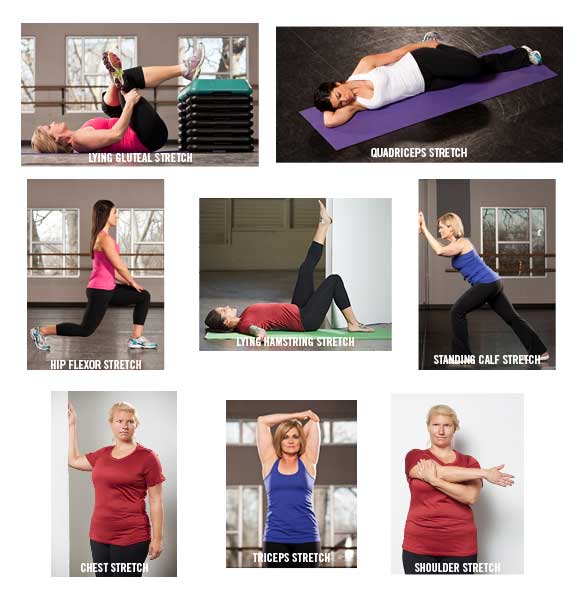
Figure 2. Exercises performed for the flexibility exercise component.
Neuromotor Exercise
The neuromotor exercise component consisted of three different exercises: the 5-10-5 shuttle run, the hexagonal agility test and the single-leg squat test (a measure of dynamic balance) (Figure 3). Participants performed each of the three neuromotor exercises with 90 seconds of rest between each exercise. Participants then completed a second set of each exercise with 90 seconds of rest between exercises. The mean of the two trials for each neuromotor exercise was recorded.
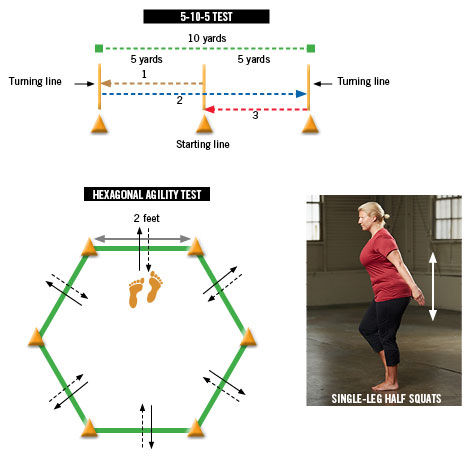
Figure 3: Sample diagrams of neuromotor exercises for the neuromotor training.
Interpreting the Results
The results of this study were definitive: To maximize the benefit of an individual workout, the exerciser should first perform cardiorespiratory exercise, then complete the resistance-training component. The flexibility and neuromotor exercises should be performed third and fourth in the sequence, in either order.
Cardiorespiratory exercise should be performed first because the mean HR increased if cardio was performed later in the workout (Figure 4). In fact, the mean HR for the average study participant was 12 beats per minute (bpm) higher when cardio was performed fourth in the sequence than when it was performed first. It’s important to note that each study participant performed the same cardio exercise in all 24 of his or her workouts, so the increased HR was the direct result of the change in exercise sequence and not due to variations between workouts.
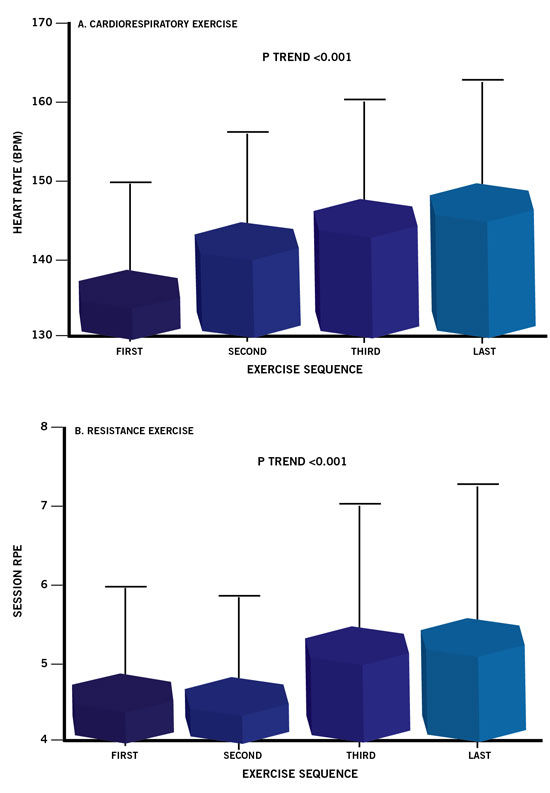
Figure 4. Heart-rate response to cardiorespiratory exercise (A) and resistance exercise RPE (B) across exercise sequence. Columns = means; error bars = standard deviations
While many exercisers are often told that the goal of cardio is get the heart rate up, this study used a moderate-intensity session. That 12-bpm difference often moved the exerciser up into a vigorous-intensity range, which has meaningful implications for you and your clients. “If a client is trying to establish a moderately intense workout routine,” says Dr. Dalleck, “the trainer may unknowingly be having the client perform vigorous-intensity exercise because of inappropriate sequencing.” Dr. Dalleck points out that the implications of exercise being too vigorous can vary from increased dropout among clients and a risk of musculoskeletal injury to an increase in the risk of cardiac events. The bottom line is that performing cardio training first ensures that the client is performing exercise at the programmed intensity.
The intensity of the resistance-training component of the workout was measured using RPE. While RPE increased as the resistance training moved to later in the workout, the difference was not significant enough to outweigh the benefits of performing cardio first (see Figure 4). Therefore, sequencing resistance training second maximizes its effectiveness without having the client feel like the effort was too much to complete.
The findings for the neuromotor and flexibility elements showed that there were minimal differences in the physiological response regardless of where they were positioned in the workout, which is why this is left up to the preferences of the client.
Research Implications for Fitness Professionals
It is clear that sequencing has a significant effect on the acute physiological and psychological responses to an exercise session, but it is rare that the findings of this type of research are so cut and dry. That said, it’s unlikely that all of your clients will suddenly agree to perform every workout in the sequence outlined in this article. But this type of research enhances your ability to utilize the ACE Integrated Fitness Training® (ACE IFT®) Model to develop personalized programming, in that you are armed with additional research-based explanations for what you teach your clients. Not only do you know what an individual client should be doing to achieve results, but this type of research adds another level of how and why.
Cedric Bryant, Ph.D., ACE’s Chief Science Officer, points out that, while this type of research is incredibly valuable, working with clients is also about understanding their desired goals and outcomes. “The order determined by this research stems from purely physiological findings,” Dr. Bryant explains, “and fitness professionals know that being a good trainer moves beyond physiology. But it’s absolutely essential, for example, that a trainer knows how sequencing affects cardiorespiratory performance and can account for that effect in the program design.”
Dr. Dalleck agrees that these study findings should not be used as if they are set in stone. “When working holistically with a client, the client’s needs and goals should drive the development of the exercise program.” For example, if you are working with a client who needs to focus on balance training, you may want to sequence that element first once each week to emphasize it and have the client perform the exercises when he or she is most alert and ready to work. Also, remember that every workout does not need to include all four types of exercise, so a stand-alone resistance-training day may be very important to a client who wants to focus on developing strength, just as some clients may want to perform an extended cardio-only session on certain days.
To sum up, this research uncovered the optimal exercise sequence to maximize the physiological response to training, but it is your responsibility as a fitness professional to take your client’s needs and goals into account to develop truly individualized programming.
Reference
American College of Sports Medicine (2014). ACMS’s Guidelines for Exercise Testing and Prescription (9th ed.). Philadelphia: Wolters Kluwer/Lippincott Williams & Wilkins.





 by
by 